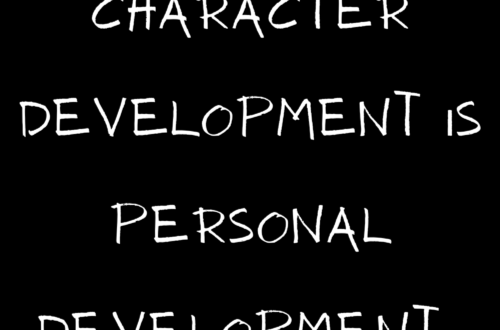7 Unconventional Ways to Be in the Present Moment
When we think of being present in the moment, we often think of mindfulness, meditation, or deep breathing. But being present doesn’t need to be complicated or difficult. It can be as easy as smelling freshly baked cupcakes! Read on to learn the 7 unconventional ways to be in the present moment.
What Does Being Present Mean?
When the average person like you or I think about being present, we think about focusing on the now and being here in the now. While this is what being present means, it is abstract. So how can presence be more concrete? What does presence really mean?
Science has clearly defined what it means to be present. Presence in science is known as mindfulness. Mindfulness has two components to it. The first component is self-regulation of one’s attention. The second component is the orientation to the experience that one has which involves adopting an attitude of curiosity, openness, and acceptance (Bishop et al., 2004).
Self-regulation of Attention
This is defined as being able to sustain your attention on one thing such as your breath. It also involves being able to switch your attention from one object to another (Bishop et al., 2004). For example, if a thought, emotion, or sensation comes up, you may acknowledge it and then come back to the breath.
Regulation of attention is all about sustaining your attention on one thing and being able to switch your attention when necessary. However, this does not mean just focusing on your breath. You can focus on sounds, sights, or smells around you.
Orientation to the Experience
The second component of mindfulness involves staying curious and open to the experience that you are having. It means noticing all sensations, emotions, and thoughts. Acceptance means to directly experience everything in your experience without having any expectations or agenda (Bishop et al., 2004).
Overall, being present means being able to control your attention so you can focus on the now and being able to bring it back if it wanders. It also involves accepting the moment and surrendering to it. This means you let go of whatever you think the experience should feel like.
Now, this all sounds great in theory but how do you actually implement this and be more present without doing specific mindfulness meditations?
There are various ways to bring your attention to the now. I will list the unconventional ways to be in the present moment. Then I will also talk about some of the challenges that you may encounter while trying to be in the present moment and accepting it.
7 Unconventional Ways to Bring Your Attention to the Present Moment
1. Observe your breath
Alright now, this isn’t an unconventional technique to be in the present moment but it works. Try it right now. If you’re just sitting there, pay attention to your breathing. Don’t change it or try to force it to be some way. Just be curious about what it feels like. Is it fast or slow? Is it deep or shallow? Can you hear your breath? Just observe it and see how long you can pay attention to it without getting distracted. If you get distracted within the first 30 seconds, that’s okay, just bring your attention back to your breath. This exercise helps to regulate your attention.

2. Observe your mind
Again, probably not an unconventional technique but don’t worry, we’re getting there. Can you pay attention to the thoughts or emotions as they come up? The tricky part is to not get caught up in the thoughts by ruminating or thinking. If you’re new to this, it may get very uncomfortable at first. You may feel fidgety or shift your eyes really fast. Don’t worry, it’ll get better if you keep at it. You’ll feel uncomfortable for the first few minutes and then your mind will calm down.
If you don’t experience discomfort but also feel like you’re not present, you’re more likely getting caught up in your head. This is the habitual state that most of us live in. If that’s the case, don’t worry, try a simpler technique first like observing what is around you. Again this technique helps to regulate your attention.
3. Observe your body or pay attention to the objects around you
Now, this might be new to some of you. You can be present by bringing your attention to your hands, the chair you are sitting on, or whatever object is in front of you. Really focus on these objects. Can you notice the details? If you’re attentive to them, you’ll notice details you hadn’t noticed before. Do you see any redness or paleness on your skin? Perhaps a new mole you never knew you had.
Pay attention to the objects around you. Really focus on your desk, your bed, notebook, pen or whatever else is in your environment. This unconventional technique helps to regulate your attention while maintaining an attitude of curiosity to what is around you.
4. Pay attention to specific sounds around you
What do you hear around you? Try it out. Shift your attention away from what you are reading to sounds in your environment. Are there people talking? Maybe you hear a clock ticking. Perhaps you hear some cars zooming by or some birds chirping outside. Focus on one sound in your environment or the silence if there is no sound. Notice how you feel after some time. Do you feel more present or clear-headed? This again helps to regulate your attention and develop an attitude of curiosity.
5. Pay attention to the smells around you
Perhaps you’re walking into your house where someone is making dinner. What do you smell? Can you smell anything else such as perfumes or other aromas?
Notice the trend here? Paying attention to your senses (sight, sound, smell, touch, or taste) is an easy and effective way to get your attention into the present moment. They also help you to orient to the environment with an attitude of curiosity and openness.

6. Listen to music and fully immerse in the experience
You probably already listen to music when you commute, study, or work. However, do you pay attention to the music? Your attention is diluted when you multitask such as studying and listening to music. When you try this technique, make sure you are doing nothing else. Pick a song of your choice and just listen to music. If you are truly attentive and present, you’ll notice you become immersed in the experience. You’ll be able to feel the music. You may even feel a sense of flow. That’s how you know you are present.
7. Experience awe when you witness nature
A lot of people will go out in nature to ground themselves. Have you wondered why? Here’s my theory. Nature is of course calming and soothing. But also when you witness nature, you can experience this feeling of awe which makes you really present. Awe is that feeling of wonder where you go “Wow”!
You don’t need to take a walk in the forest to experience awe. You can experience it by looking at a tree in your yard or some flowers. You can experience it by witnessing the sunset or sunrise. Have you seen a flock of birds flying together in the sunset? That experience is also awe-inducing. You can also experience awe by witnessing anything else that fascinates you. This technique helps you to cultivate an attitude of curiosity, openness, and acceptance.

What Does Being Present Feel Like?
I have two words for this: Expansion and flow. When you are present, you will feel a sense of aliveness and expansion like you are truly aware of everything around you. You will also experience a sense of flow like everything is happening so smoothly. You may feel like this all the time or every day but if you’re feeling this more often than not, that is amazing!
There is also a saturation of colours you see when you’re in the present moment. It seems as if everything is almost vivid. The sounds you hear will be more saturated and that is why music will feel so immersive. You will feel every word, every beat, and melody. Try out any of the techniques listed above. Did the objects around you seem more vivid or are the sounds around you more saturated?
You may notice your mood improving. You’ll probably feel happier in general because presence is the key to happiness. These feelings will help you determine if you are truly present or if you are in autopilot mode.
Challenges to Being in the Present Moment
The 7 unconventional ways to be in the present moment are easy and effective to implement. But there may be challenges you experience while trying to be in the present moment in general. Can you identify any that you may be struggling with?
1. Getting caught up in your head.
In my opinion, this is the biggest and toughest obstacle to being in the present moment. Our minds are constantly chattering. There is a statistic that suggests that we have 60 000 thoughts a day. Incredible!
But, taming the mind is not an easy feat. Our minds distract us through thoughts, images, emotions, and sensations. We can ruminate over negative thoughts or get caught up in feelings. Uncomfortable sensations can also take us away from the present moment. This is why it becomes necessary to keep bringing the mind back into the present moment.
2. Forcing yourself to be present
Trying too hard to be in the present moment can look like concentrating or focusing really hard. It may also be getting upset or frustrated every time the mind moves away from what you’re trying to do to some random thought.
Many of the exercises suggested above will help you to regulate your attention but remember there is another component to presence which is having an open and curious attitude. So instead of getting frustrated when your mind moves away, try to remain curious and open. If you keep getting pulled away by thoughts, acknowledge them. Try journaling about them so they don’t keep swirling in your head.
3. Having expectations of what being in the present moment will feel like
Thinking that presence should feel a certain way and wanting to control the outcome. For example, while you are working on a project, having the expectation that you will gain something. You may also expect that being in the present moment will feel like thoughtlessness or no thoughts and complete enlightenment. Those are unrealistic expectations. Again remember the principle of staying open and curious. Let go of any attachments and observe what you are actually experiencing.
4. External distractions
Maybe you are trying out one of the techniques listed above or are trying to focus on your work but keep getting distracted by your phone. The dings and pings from your phone can be quite distracting. Keep it on vibrate and close all tabs or windows on your computer that you are not using. Another tip is to keep your phone in another room or somewhere you can’t see it. This is really effective!
5. Judging yourself
If you are judging yourself for not getting to where you want to be, this may hinder your progress. Presence is a skill that takes time to master. It also takes consistency and patience. Rather than judging, stay open to the possibilities and the experience.
The opposite of judgment is openness and curiosity. When you catch yourself judging, forgive yourself. Instead, adopt an attitude of openness and be curious about the judgemental thoughts or sensations you feel in your body when you have these thoughts.
The moral of the blog post is that you can meditate without having to actually meditate. Be present. Be curious about the sounds, smells, and sights around you. Focus on what’s around you, feel that. Adopt an attitude of curiosity and openness. That is being present and that is what being alive really means. Observe your life transform!
References
Bishop, S. R. (2004). Mindfulness: A Proposed Operational Definition. Clinical Psychology: Science and Practice, 11(3), 230–241. doi:10.1093/clipsy/bph077

